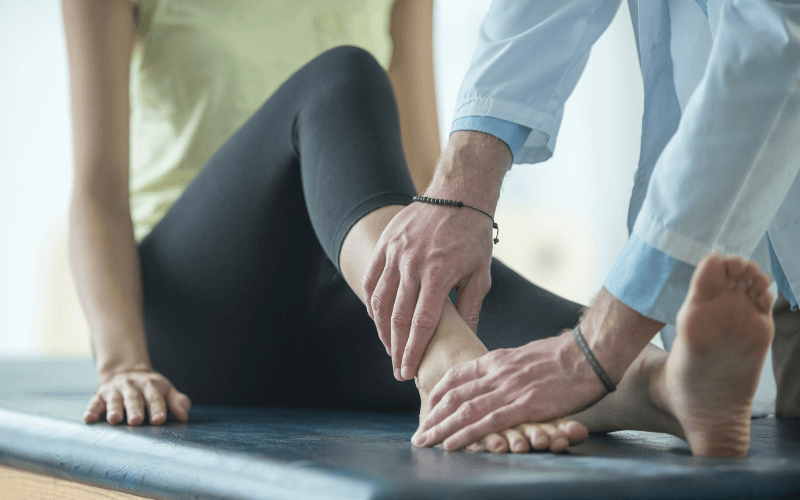There are dozens of bones and joints in your ankles, feet and toes, not to mention the hundreds of ligaments, tendons and muscles holding everything together. If just one joint is impaired or one bone is a fraction out of line, the knock-on effect can affect your entire body.
Foot mobilisation therapy (FMT) is a gentle, hands-on method to re-establish correct foot function. It eases stiffness, pressure and pain, and improves balance and movement. By reducing tension in tendons and ligaments FMT helps to free up joints and eases misaligned bones back into the correct position.
Common Foot Conditions and FMT
Many common conditions benefit from foot mobilisation therapy. Here are just some of them.
- Plantar fasciitis
- Achilles tendon pain
- Ankle sprains and instability
- Osteoarthritis
- Cuboid syndrome
- Flat feet
- Lingering scars
What Happens During an FMT Session?
Your podiatrist carefully manipulates the foot and ankle to ease stiff joints. The treatment is very gentle so there’s no need to worry about it being painful. You’ll feel a little pressure but there should be no discomfort. Indeed, many patients find their joints feel much more flexible after a session – as though the stiffness has been released.
FMT works in the following ways:
- It stimulates the production of synovial fluid. This is located within our joints and acts as a lubricant. It also forms a protective cushion around bones and cartilage within the joint. This allows the joint to move easily without friction (without synovial fluid every movement would be very painful). In addition, the fluid supplies the cartilage with essential nutrients to keep it healthy.
- Manipulation improves circulation and reduces inflammation. This eases pain and encourages soft tissues to heal – ideal for conditions like plantar fasciitis and Achilles tendinopathy.
- FMT improves balance and stability – for example, in cases of ankle instability as the result of a sprain. It does this by stimulating the sensory receptors in the joints and soft tissues. These are part of our body’s proprioceptive system which governs our perception of movement, limb placement and our location in relation to objects around us.
- Manipulation breaks down scar tissue. A scar forms to heal a wound and protect it from infection. It may eventually disappear, or it can linger to leave a strong and fibrous seal. Scars cause pain and hinder movement, but FMT breaks down stubborn scar tissue to remove painful restrictions.
Foot Mobilisation is Non-Invasive
FMT is a gentle, hands-on therapy. In many cases, it solves or greatly alleviates your condition without the need for surgery or medication. For some people, it may remove the need for orthotics, but this depends on your personal situation.
Stretching, Exercise and Orthotics
Foot mobilisation therapy is suitable for a wide range of conditions, but our experienced podiatrists always carry out a thorough assessment before starting treatment – just to make sure it’s right for you.
Several sessions are recommended – the precise number depends on your needs. We also give you stretching and strengthening exercises in conjunction with your FMT sessions. This helps you to get the very best out of your treatment. In certain cases, we also prescribe orthotics to provide additional cushioning, stability and support.
Expert Care at Feet By Pody
Our foot specialists have provided effective treatments and reassuring guidance for many years. For all lower limb conditions, from the knees down, visit one of our London podiatry clinics (we have 6 of them!).

